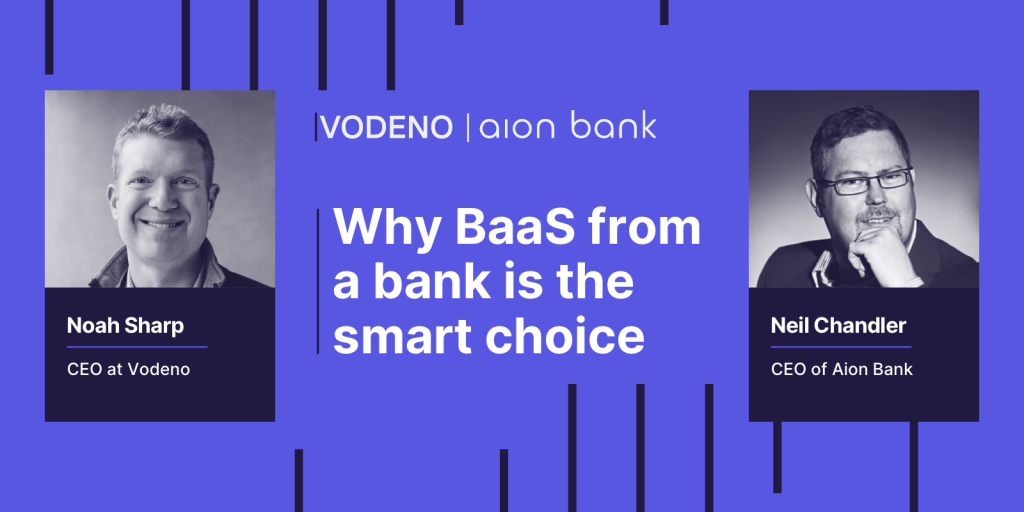There are few industries poised to benefit from embedded finance (EF) as much as retail.
In the 21st Century, the rapid shift towards online shopping means that an exceptional digital experience is essential to retailers’ success, with the ability to seamlessly integrate financial products into the customer journey, opening the door to a new world of opportunities.
So, it’s not surprising that in recent years we have seen a notable rise in the number of retailers partnering with Banking-as-a-Service (BaaS) providers to embrace EF. In this blog we will explore this trend in greater depth, outlining how EF is transforming the customer journey for retailers.
Retailers cannot afford to ignore embedded finance opportunities
Retailers are using embedded finance solutions in an increasingly varied way. But, it’s best to first consider why these businesses are investing in EF – what are the benefits?
“Payments has been the primary gateway to embedded finance for retail businesses, reducing both costs and transaction times,” says Jean-Jacques Le Bon, Vodeno’s Chief Strategy and Product Officer. “But it’s customer experience and loyalty that will see the greatest benefits of more advanced EF solutions in years to come.”

By integrating financial products into their customer journeys, retailers can create a frictionless online shopping experience from start to finish, and, in turn, they benefit by:
- Increasing basket size and conversion
- Improving loyalty
- Generating new revenue streams
Crucially, EF is no longer just a means of gaining an edge in a competitive sector – it’s fast becoming a strategic imperative.
Today’s digitally native customers have little patience for fragmented shopping experiences or unintuitive checkout journeys when making online purchases, and so, as we will highlight below, retailers not offering EF solutions are falling behind those who are embracing it.
For any retailer considering EF, here are three key things to consider.
Payment choice
As Le Bon explains, payments is the most common and obvious example of how retailers can leverage EF. Buy Now, Pay Later (BNPL) and instant payments have become the norm in eCommerce, giving customers greater choice at checkout.
Proving that BNPL is gaining mass adoption, 2023 research by PYMNTS Intelligence revealed that 28% of Millennial and Generation Z consumers would abandon a purchase if BNPL was not available at the checkout. Meanwhile, a more recent study from the same firm showed that one in four shoppers will trade down for a cheaper item when BNPL is not an option.

Clearly, consumers are now demanding flexibility and choice when it comes to payments, and the financial pressures of the cost-of-living crisis have only catalysed this trend. EF ensures retailers can deliver just that, whether selling via an app or website, meaning they no longer have to link to an external third-party payments provider, but instead give their customers a choice of payment options at checkout via a frictionless experience.
Building loyalty
Successful retailers have vast customer bases who spend money with them, but many consumers can be fickle, remaining loyal to a particular brand or retailer so long as the prices, products and experiences are suitably compelling.
Building stronger, more loyal relationships with customers is therefore the holy grail for retailers, and EF can be the means for reaching it. As noted, BaaS-powered embedded payments deliver much-needed flexibility and choice to customers, maximising the size and frequency of purchases. But, EF can also more directly encourage and reward loyalty.

Last year, Aion/Vodeno commissioned an independent survey of more than 3,000 European consumers in the UK, Belgium and Germany. Two in five respondents told us that they will only stay loyal to brands that offer embedded banking products like BNPL and cashback, with this figure rising to 50% among 25-34-year-olds.
When it comes to engagement with loyalty programs, 46% of European consumers said they are more likely to use a brand’s loyalty card to make purchases if it includes embedded banking products. Again, this was particularly true (rising to 65%) for those aged 25-34.
In the elusive search for stickiness, it’s clear that retailers can take significant strides forward by integrating financial products into the customer journey and ensuring loyalty schemes offer EF benefits for frequent shoppers.
“Much has been said about embedded finance’s influence on retail loyalty, but the benefits for retailers go beyond increased conversion and basket sizes,” Le Bon adds. “The other side of EF-enabled loyalty solutions is that it creates detailed data profiles for individual consumers that can be leveraged to influence their browsing behaviours.”
“Uptake for EF-enabled loyalty solutions is still behind that of payments, but we are going to get there soon. Just as cloud computing was initially met with resistance, the benefits of embedded loyalty solutions for retailers are so great that we are going to see them quickly become much more widespread.”
Convenience is king
From credit cards and loans to insurance and accounts, today’s consumers are becoming ever-more comfortable using the brands and businesses they already shop with regularly to also access the banking services they need. And why not, given the sheer convenience of doing so?

Aion/Vodeno’s survey underlines this point, with most (52%) 25-34-year-olds saying they prefer using financial products and services from their favourite brands over traditional banks, with the same number (52%) stating that brands offer financial products better tailored to their specific needs compared to traditional institutions.
Retail is undoubtedly at the forefront of the embedded finance revolution, and savvy consumers understand the value of these products and are driving adoption.
Key takeaways:
- Modern consumers expect a choice between fast, frictionless payment options.
- Online shoppers spend less or abandon purchases when BNPL is not available at checkout.
- Loyalty schemes are more likely to have an impact when they include embedded finance benefits.
- Consumers enjoy the convenience of accessing financial products and services from the brands and retailers they already shop with.
- Retailers will potentially lose customers to competitors if embedded finance solutions are not integrated into the user journey.
Do you want to learn more about how Banking-as-a-Service and embedded finance can transform your business or industry? Then get in touch with Vodeno today.



